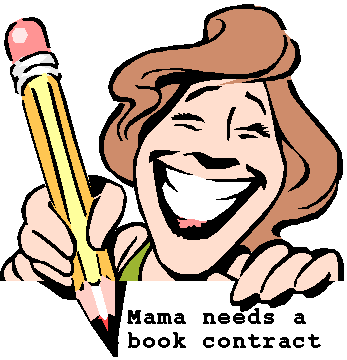In January 2006, I purchased my first laptop; I was finally liberated from my desk. I could take my computer wherever I went (and I do), and I could sit in the living room with my family while still working rather than being closed off in my office. I loved it.
And then summer came, and I was wearing shorts, and I have to say the bottom of this little laptop gets HOT. Plus it made unsightly little laptop feet marks on my lap. Laptops it seems are not really lap-top friendly. Plus I don’t tend to sit very well when I use my laptop. I sit crooked, so the laptop sits crookedly on my lap. This is probably not good for the laptop.
Plus, when you work in the living room, sometimes you tend to leave your laptop perched on the side of the couch with a cord stretched across an area that is hardly ever used for a walking path BUT is a magnet as soon as you leave your laptop perched. This is what caused the first initial crack in my old laptop that eventually led to its temporary and finally permanent replacement.
So, I have been looking at ways to fix this summer-time problem and hopefully extend the life of my current laptop. I finally purchased a laptop table with a split-top. Part of the top tilts to make it easy to type while the other side remains flat for a mouse and/or books. The picture on the box shows a drink there, but I don’t think so. It basically looks like a shorter-version of a hospital table.
It seemed perfect. Except most of my living room furniture is not meant to work with a laptop table. The living room furniture doesn’t have the space underneath it to allow the table to slide under it. And the table has to be able to slide under it in order to get it the right distance away to work. I’ve found a couple of options, and I really like it when I decide to work in my bedroom while perched on my bed. My lap doesn’t overheat, and I don’t get those little feet marks in my legs anymore.
Now I just need to get something that will make it easier to see my screen when I want to work outside in the sun. Maybe next summer.
The laptop table I bought sort of
looks like this one, but there are others you can find too. The
Lap Dawg looks interesting. And I like
this one from Ikea too.
If you are interested in buying a laptop table, I recommend paying attention to how it will fit with your furniture (will the legs slide under the furniture easily?) and how the height adjusts. On the table I bought, the table tilts very easily, but to adjust the height, I have to unscrew two handles almost completely. It would have been nice if the set up was similar to the way the table tilts (I just need to pull, adjust, and put back in place).







